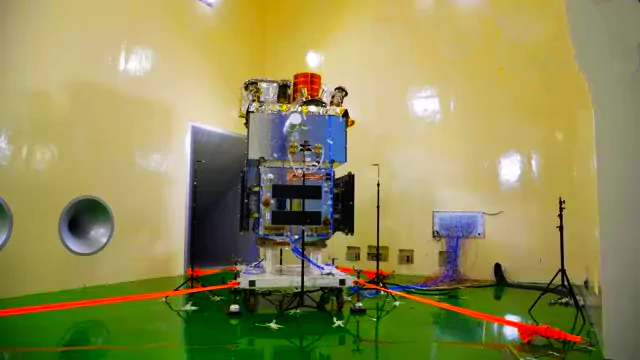The first astronomy satellite jointly developed by China and France named Space Variable Objects Monitor (SVOM) was launched into orbit from the Xichang Satellite Launch Center in Sichuan Province, China recently.
About The Space Variable Objects Monitor (SVOM)

- Sino- French Collaboration: The Space Variable Objects Monitor (SVOM) is the first astronomy satellite jointly developed by China and France.
- The two countries had together developed and launched an oceanographic satellite in 2018 also
- Payloads: The satellite is a 930-kg satellite consisting of four payloads, two developed by the French and two by the Chinese.
- The ECLAIRs and MXT telescopes: Built by France, It will detect and capture the GRBs.
- The Gamma Ray Burst Monitor (GRB): Built by China, It will measure the spectrum of GRBs.
- The Visible Telescope (VT): Developed by China, It will detect and observe visible emissions produced immediately after a GRB.
- Mission Objective: SVOM primarily will look for GRBs across the universe and will measure and study their electromagnetic radiation properties.
- The satellite will also use the bursts to unlock mysteries regarding the evolution of the universe, and gravitational waves, as both gravitational waves and GRBs originate from the collision of neutron stars.
- Significance:
- Better Detection: As per the Chinese state broadcaster CCTV, SVOM is the most powerful satellite yet that will study the gamma-ray bursts and play an important role in astronomical explorations.
- Early Universe: The SVOM aims to see the earliest gamma-ray bursts that took place in the farthest parts of the universe, which will help scientists learn more about the universe’s childhood and its evolution.
- Searching for Kilonavas: The SVOM satellite will search for kilonovas as well to study the stellar evolution, and to obtain answers about the origins of heavy elements like gold and silver in the universe
Enroll now for UPSC Online Course
Gamma Ray Burst
- GRBs are bursts of highly energetic gamma rays (the most energetic form of light) which last from less than a second to several minutes.
- Significance for research: GRBs are observed and studied because they carry information pertaining to violent events such as the end of life of massive stars, the formation of black holes in distant galaxies, and how they shape the universe.
- When a GRB erupts, it is briefly the brightest source of cosmic gamma-ray photons in the observable Universe.
- Origin: They are known to occur in distant realms of the universe (resulting from some of the universe’s most explosive events such as the birth of black holes and neutron star collisions) and can erupt with a quintillion (a 10 followed by 18 zeros) times the luminosity of the Sun.
- Types: There are two types of GRBs,
- Short GRBs: They are a result of the collision of either two neutron stars or a neutron star and a black hole, resulting in a black hole and last for less than two seconds
- Kilonavas: Sometimes, short GRBs are followed by kilonovas, ie. It is a blast of electromagnetic radiation that is produced by the radioactive decay of chemical elements. The decay can lead to the generation of heavier elements like gold, silver, and platinum.
- Long GRBs: They are produced due to the explosive deaths of massive stars. These can last for two seconds or longer.
|
![]() 26 Jun 2024
26 Jun 2024

